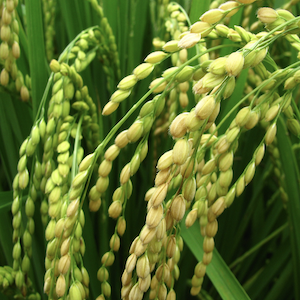Systemic adaptation of rice plants under low phosphate conditions and interaction with endophytic bacteria

Appendix: 189
HTML: 124
All claims expressed in this article are solely those of the authors and do not necessarily represent those of their affiliated organizations, or those of the publisher, the editors and the reviewers. Any product that may be evaluated in this article or claim that may be made by its manufacturer is not guaranteed or endorsed by the publisher.
Phosphate (Pi) is essential for plants. Plants have adapted mechanisms to overcome Pi deficiencies. This study examined the interaction of two contrasting rice varieties (G22 and G299) and two endophytic bacterial strains. Four different culture media were established: full Pi (P0), Pi starvation (P*), insoluble Pi with Pi-solubilizing Burkholderia sp. strain 205 (P+205), or Pi-insolubilizing strain 113 (P+113). We investigated the responses of rice to these media. Root length and weight and the number of crown roots were higher in the P* and P+113 medium than the two other media. However, shoot length, and weight were lower. Most amino acid families were higher in the P+113 medium than in the other media. The roots of G299 plants in the P+113 medium showed the highest relative expression of all phosphate-analyzed genes; however, these genes were expressed at low levels in the leaves of both rice varieties. Notably, the jasmonic acid gene OsJAZ5 showed the highest expression in the roots of G299 plants in the P+113 medium. Our results demonstrate the strong effects of the different genetic backgrounds of bacteria and rice plants on the response to low Pi. We also demonstrate the involvement of jasmonic acid in low Pi and soluble-phosphate-bacteria interaction in G299 plants. A positive interaction between Burkholderia sp. strain 205 and rice plants has been noticed in the promotion of plant growth. Further studies under field conditions should be undertaken to develop this potential strain as a biofertilizer.
How to Cite

This work is licensed under a Creative Commons Attribution-NonCommercial 4.0 International License.
PAGEPress has chosen to apply the Creative Commons Attribution NonCommercial 4.0 International License (CC BY-NC 4.0) to all manuscripts to be published.

 https://doi.org/10.4081/ija.2023.2181
https://doi.org/10.4081/ija.2023.2181



